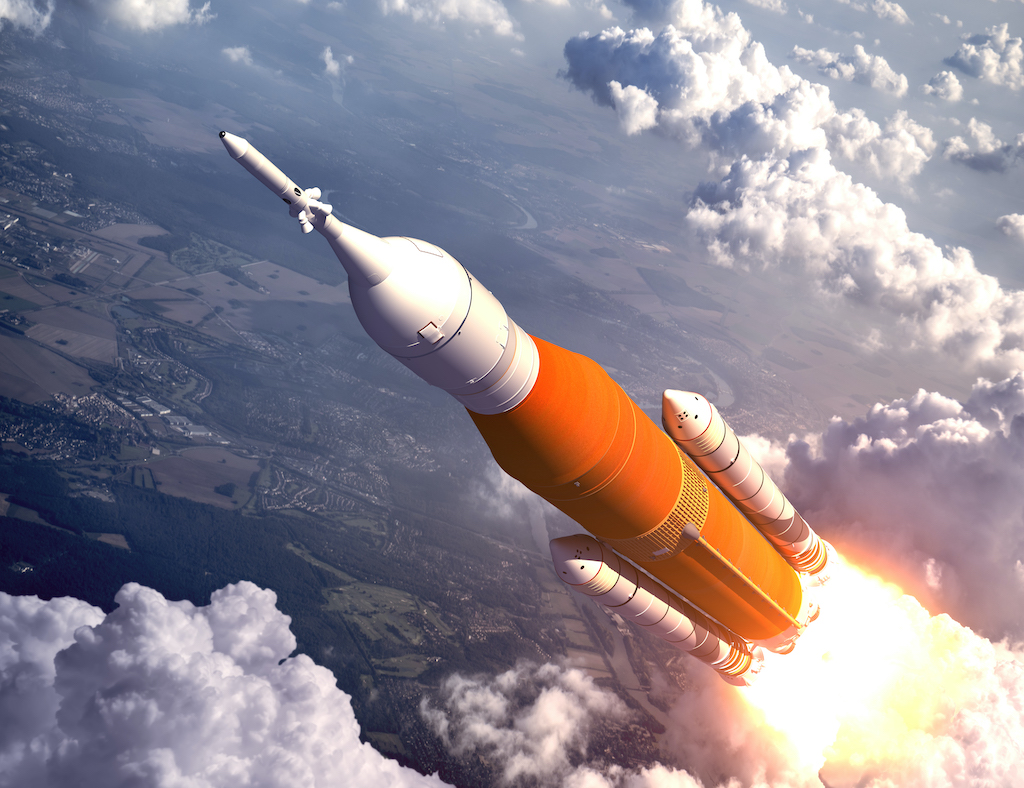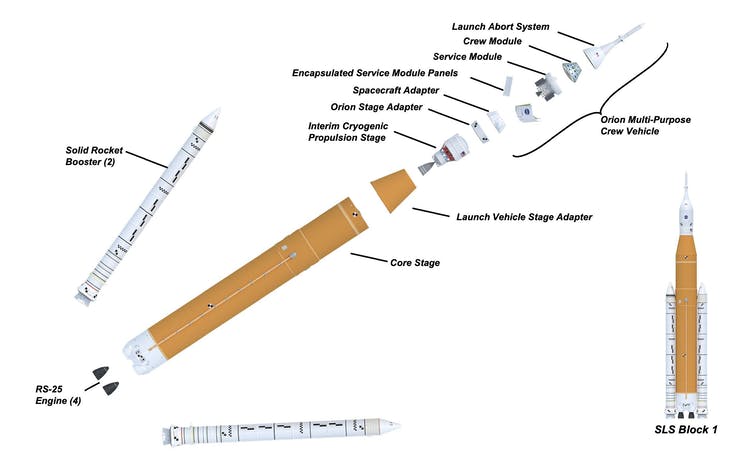NASA just ordered megarocket boosters for moon missions through 2031
The $3 billion contract will support Space Launch System missions through Artemis 9.

NASA just awarded a contract worth $3.19 billion to build rocket boosters for future moon missions, meant for Artemis moon missions through 2031.
The new award builds on a previous 2020 contract authorizing Northrop Grumman to prepare for production and building twin boosters for the next six Space Launch System megarocket flights following Artemis 3, which will bring the program through Artemis 9.
SLS — which will make its first uncrewed flight in 2022 — is tasked with sending crews across the solar system, starting with missions to lunar orbit, the lunar surface or the planned lunar Gateway space station. The first crewed orbital flight is expected in 2024 and the first landing mission in 2025.
NASA's contract statement indicated the award will be beneficial in helping the agency plan and grow the Artemis program to meet future needs.
Related: NASA targets February launch for its 1st SLS moon megarocket
"The contract allows NASA to work with Northrop Grumman to not only build the boosters for upcoming missions, but also to evolve and improve the boosters for future flights," stated Bruce Tiller, SLS booster manager at NASA's Marshall Space Flight Center in Alabama.
The SLS booster technology is based upon the solid rocket boosters used to assist the NASA space shuttle during launches. Solid rocket boosters were used during 135 space shuttle missions between 1981 and 2011. The manufacturer was initially Thiokol, later called ATK. Northrop Grumman now has the technology thanks to a series of company mergers in the last decade.
The SLS boosters are designed to be one-time use (not reusable, as the shuttle program asked for) and include a fifth segment over the shuttle's four, NASA documentation indicates. Northrop Grumman's statement about the new contract indicates more design changes the shuttle program are already underway, to start flying during the ninth mission of SLS.
Get the Space.com Newsletter
Breaking space news, the latest updates on rocket launches, skywatching events and more!

"The new ... boosters will replace the steel cases used for the shuttle with a weight-saving composite case and upgraded structures, electronic thrust vector control systems and propellant materials to address obsolescence," the company stated.
"This improved design," Northrop continued, "additionally provides process simplification, improved interface, and streamlined ground processing ... leading to greater productivity and efficiency."
Orbital ATK, a predecessor entity to Northrop Grumman, began test firings of the booster system in 2009, following years of development. The SLS booster was originally slated to be the first stage of the Ares rocket under a canceled moon-to-Mars program known as Constellation, but the technology was eventually repurposed for SLS.
Northrop Grumman has been the lead manufacturer for SLS booster development since acquiring Orbital ATK under an agreement announced in 2017.
This new announcement arises from a nearly $50 million NASA letter contract in June 2020 to provide funding and authorization for future Northrop Grumman booster orders. It authorizes production and operation for boosters supporting the missions Artemis 4 through 8, along with evaluation of a new booster design to fly on Artemis 9.
As of December 2021, Northrop Grumman says it has finished booster production on Artemis 2, and that all segments for the Artemis 3 boosters have been cast with propellant. Artemis 4 segments started casting in November.
Northrop Grumman is also executing other NASA contracts in support of moon missions. This includes building the abort motor and attitude control motor for the Orion spacecraft's launch abort system, and building a habitat and logistics outpost module for Gateway.
Follow Elizabeth Howell on Twitter @howellspace. Follow us on Twitter @Spacedotcom and on Facebook.
Join our Space Forums to keep talking space on the latest missions, night sky and more! And if you have a news tip, correction or comment, let us know at: community@space.com.

Elizabeth Howell (she/her), Ph.D., was a staff writer in the spaceflight channel between 2022 and 2024 specializing in Canadian space news. She was contributing writer for Space.com for 10 years from 2012 to 2024. Elizabeth's reporting includes multiple exclusives with the White House, leading world coverage about a lost-and-found space tomato on the International Space Station, witnessing five human spaceflight launches on two continents, flying parabolic, working inside a spacesuit, and participating in a simulated Mars mission. Her latest book, "Why Am I Taller?" (ECW Press, 2022) is co-written with astronaut Dave Williams.









